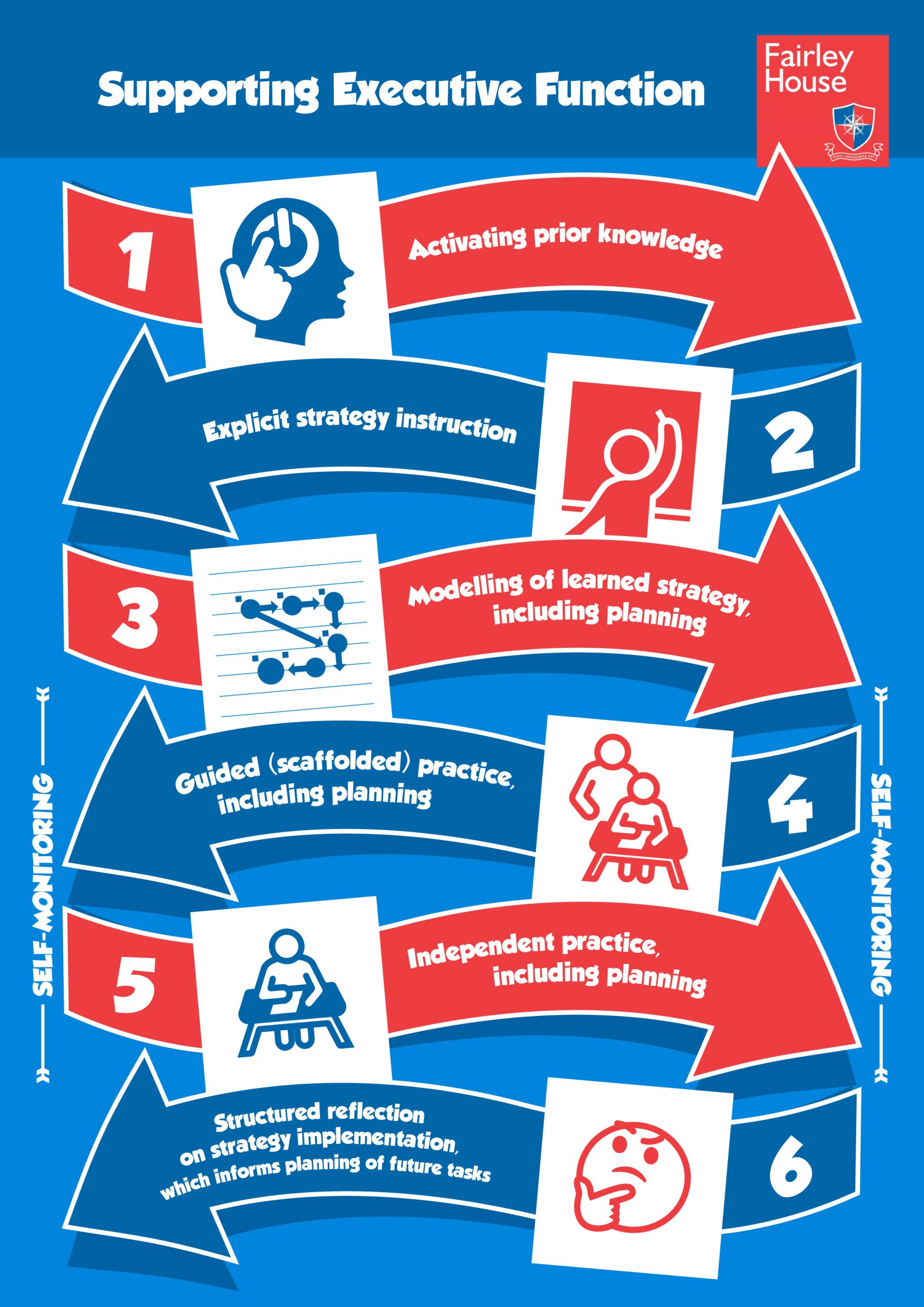Executive Function
Executive function is the process of consciously controlling thoughts and actions. It is a set of cognitive skills that we all use every day.
Executive function skills do not develop automatically but are nurtured through experiences, practice and positive role models. Explicitly teaching executive function skills helps to support classroom learning.
Executive function difficulties may have a wide-ranging impact on daily life:
- Disorganisation
- Forgetfulness
- Irregular routines at home
- Not rested – electronics interfere with sleep and other routines
- Approaches tasks randomly and without a plan
- Forgets multistep instructions
- Overwhelmed and dysregulated
- Lacks follow through
- Struggles with planning
- Poor time management
- Missed deadlines
- Has trouble getting started and completing tasks
- Difficulty prioritising
- Difficulty with self-monitoring and self-awareness
Executive function skills can be strengthened by:
- Developing positive habits and routines
- Developing a growth mindset
- Nurturing positive self-talk
- Self monitoring and evaluation
- Implementing a range of metacognitive strategies
- Using everyday activities, conversations and experiences as opportunities to strengthen executive function
Strategies to support executive function at home
Click on each strategy category to find useful strategies for you to try out with your students or children.
Cognitive component strategies
- Initiate: Provide prompts to begin tasks, break tasks into smaller steps.
- Task Completion: Use visual timers, break tasks into small, achievable parts.
- Working Memory: Use visual aids, repeat instructions, provide gentle reminders.
- Plan/Organise: Help them think ahead, use checklists and calendars.
- Task-Monitor: Encourage reflection on performance, ask questions about how the task went.
- Organisation of Materials: Teach routines for keeping workspaces tidy, create a designated area for supplies.
- Environmental Factors – Noise levels, lighting, time of day (is it nearly lunch time!)
- Lead by Example – Model how it is done, share stories of when you have found it difficult.
Emotional component strategies
Emotional Control:
- Model calm in stressful situations.
- Introduce interoception to help your child recognise internal cues linked to emotions.
- Use the Zones of Regulation to teach your child to identify and manage their emotions.
- Set up a calming corner with sensory items.
Shift:
- Use transition cues (timers, reminders) to prepare for change.
- Create visual schedules for smooth transitions.
- Use first-then language for task transitions.
- Practice cognitive flexibility games like ‘Simon Says.’
.
Behavioual component strategies
Inhibit
- Use ‘Stop and Think’ or ‘Pause and Plan’ cues.
- Play impulse control games (Red Light, Green Light).
- Use physical reminders like stop signs.
- Practice delayed gratification with rewards.
Self-Monitor:
- Reflexive questions
- Encourage self-reflection with a journal.
- Provide positive reinforcement for self-correction.
Effective executive function is essential for successful learning
In the near future we will share our strategies for encouraging students to engage in active learning, whether it be exam preparation or homework.
Further information and reading.
https://developingchild.harvard.edu/science/key-concepts/executive-function/
https://educationendowmentfoundation.org.uk/education-evidence/guidance-reports/metacognition
https://www.beyondbooksmart.com/
https://www.withunderstandingcomescalm.com/about/
https://www.ted.com/talks/carol_dweck_the_power_of_believing_that_you_can_improve?subtitle=en

